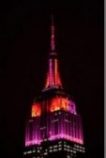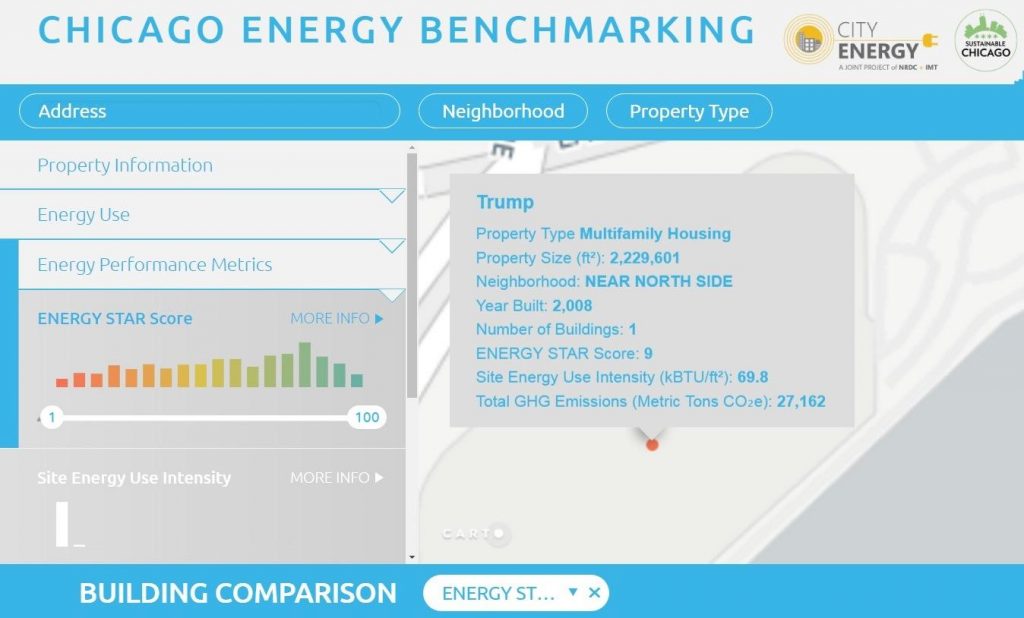While solar and wind have proven to be job-creating engines in the US, a much bigger source of middle class jobs is the Green Building industry. About a third of the 6.5 million people employed in the construction industry work on building energy and efficiency projects, according to the Department of Energy’s U.S. Energy and Employment Report. And that doesn’t count developing and manufacturing new green materials, for example.
Unfortunately, our President, who prides himself on developing some of our tallest buildings, doesn’t have a single green building. More on that below.
Green Building is a win-win-win: Building owners see significant savings in energy and water costs on their bottom lines; tenants and employees get healthy workplaces; and the environment benefits from preservation of natural resources and much lower greenhouse gas emissions. The cities where green buildings are located also benefit – the buildings are more attractive to tenants, and there’s less need to expand energy and water infrastructure.
Commercial and government building owners were the first to embrace green technologies, and the residential and industrial sectors are catching up.
The Empire State Building is the 9th most energy efficient building in the world
Many of our largest cities, such as NY, San Francisco, Boston, Washington DC and Chicago now require building owners to report on the energy and water they consume.
Take Chicago, For Example
Since 2013, Chicago has required buildings larger than 50,000 square feet to report annually on energy consumption in the city’s Energy Benchmarking database. In three years, those building owners saved a combined $17.8 million in energy costs by upgrading heating and cooling systems, and other efficiency measures, reports Chicago Tonight.
Trump International Hotel & Tower, however, Ranks Last among the 100 largest buildings in Chicago – with a score of 9 out of 100 possible points! Trump’s 98-story building trails behind two-thirds of Chicago’s largest buildings, which got scores of 65.
In fact, no Trump building anywhere is certified by LEED or Energy Star.
That’s sad, because meeting basic LEED standards is easy. About 20% of energy can be saved just by doing simple things like upgrading to LED lighting and using sensors to automatically turn lights off in empty rooms. By ignoring energy efficiency, the Trump organization pays $6 million a year for electricity for that building, when they could be paying $1.2 million less.
Trend: Energy Intensity Falling
Energy Intensity in US commercial buildings is coming down, according to the US Energy Information Agency (EIA). Even as they expect commercial floor space to grow 1.1% a year through 2040, energy consumption will fall dramatically, says EIA.
The US has lots of efficiency gains to capture. Compared to other countries, the US is tied with South Korea for 7th place, according to the American Council for an Energy Efficient Economy (ACEEE).
1. Germany
2. Italy and Japan (tied)
3. France
4. UK
5. China
6. Spain
7. South Korea and United States (tied)
8. Canada
9. Netherlands
10. Poland
In the US, these are the top 10 states for LEED-certified buildings. Washington DC has the most certified square feet per capita, but isn’t ranked because it isn’t a state.
|
2016 Top 10 States for LEED |
||||
| Rank | State | Certified Gross Square Footage (GSF) | Per-capita Certified GSF | Total No. Projects |
| 1 | MA* | 24,398,765 | 3.73 | 136 |
| 2 | CO* | 15,921,457 | 3.17 | 92 |
| 3 | IL* | 36,188,485 | 2.82 | 151 |
| 4 | NY | 48,405,204 | 2.5 | 211 |
| 5 | CA* | 88,891,641 | 2.39 | 632 |
| 6 | NV* | 6,397,602 | 2.37 | 22 |
| 7 | MD* | 13,426,623 | 2.33 | 104 |
| 8 | VA* | 18,444,309 | 2.31 | 155 |
| 9 | WA* | 15,103,478 | 2.25 | 105 |
| 10 | TX* | 41,942,393 | 1.67 | 211 |
| ** | DC | 17,476,447 | 29.04 | 120 |
*Also a top 10 state in 2015


